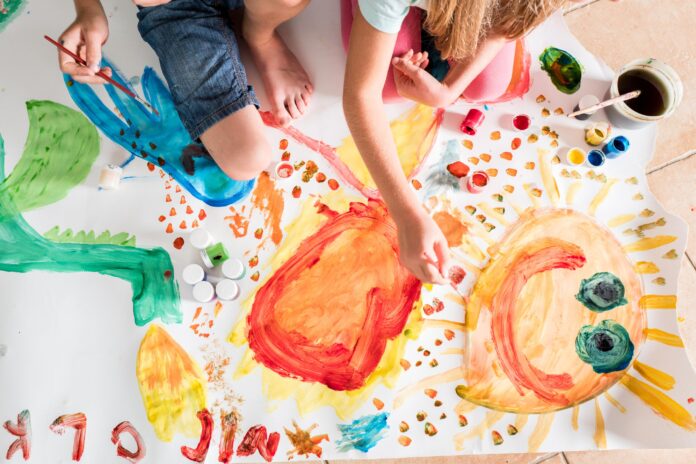From laundry art to ‘name that tune,’ arts enrichment teachers are finding creative ways to transition to remote teaching.
When art teacher Janis Henderson-Hunsucker learned that her school in Danbury, North Carolina, would close because of the coronavirus, she quickly crafted a survey to find out what art supplies her students had at home. It turned out, not many.
Anxious to keep the learning going, she mailed boxes of basic art supplies like markers, crayons, colored pencils, glue, and scissors to her students, many of whom live in the hills and hollers of Appalachia where internet access is limited. She included the foreshortening drawings that students had started in class with instructions on how to finish them.
She’s not alone. Across the country, teachers of drama, music, visual arts, and dance are making difficult decisions on the fly.
The arts are essential, but enrichment classes often involve physical materials, group activities, or even audiences—requirements that aren’t easily met in digital environments. Additionally, teachers typically serve multiple grades and classes that require differentiated lesson plans.
A QUESTION OF MATERIALS
Instead of focusing on skill-based assignments, some teachers say they’ve looked for ways to encourage students’ creativity and engagement using basic household materials—many students have no access to the typical art supplies.

A TEAM OF ONE
The teamwork and collaboration in performance-based classes and rehearsals can be difficult to re-create online, teachers say.
Instead of using notes and rhythms that his students already know, Campbell is now sending sheet music without titles for his students to learn, record themselves playing, and then guess the name of the song. Students spend one week learning the piece, and then the following week they record their performance. It has gone so well that he’s considering incorporating individual recording into his curriculum when in-person school resumes.
In Holland’s drama class, on the other hand, students are still planning on performing their show, just in an online form. Her students gather in a Google meet several times a week to rehearse or play improv games. She also assigns non-performance theater lessons such as creating a costume from household materials.
Relatedly, after canceling The Little Mermaid, Wozniak was excited to learn of The Show Must Go Online, a musical designed specifically for distance learning where students record themselves performing individual monologues that, when played in succession, form a complete story line.
Amid losses, teachers say they are trying to maintain student excitement for enrichment activities by showing students new materials and resources they can access online or in their homes. Not only can these activities give students a much-needed break from core academic coursework, but also they provide students freedom to work on independent creative projects.
Analysis:
Teachers are desperate to keep the artist spirit alive within their students. The coronavirus has required art teachers of all kinds to come up with clever solutions to keep their students engaged in subjects other than math and science. I liked this article for its creative examples of how teachers are improvising with the materials they have been limited to. I especially enjoyed the idea of putting together a musical designed specifically for distance learning. This helps musical students feel connected to drama activities even when alone. With the challenge of learning from home, many students without proper materials are not receiving the same experience as that of an in-person classroom. However, with clever solutions, art and music can be accessible anywhere.
Source: https://www.edutopia.org/article/show-must-go-online-arts-teachers-adapt-home-instruction




